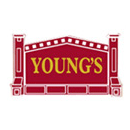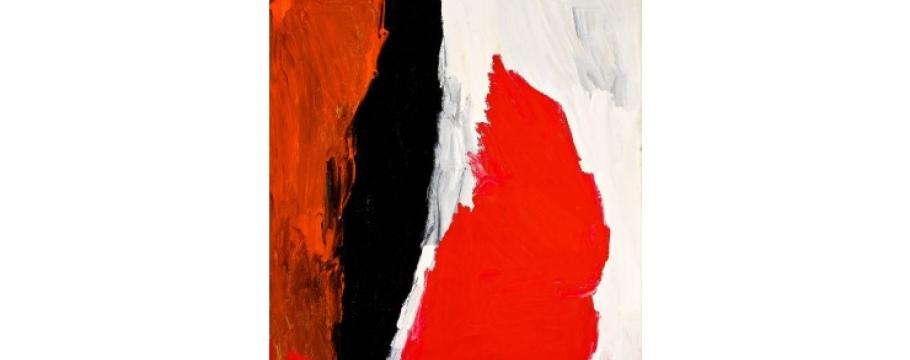
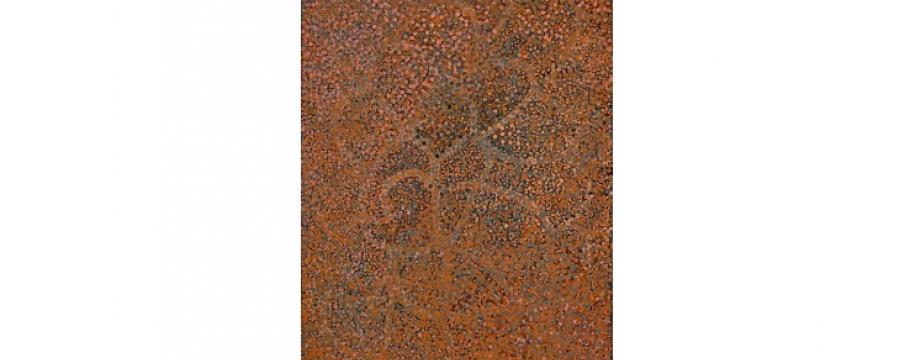
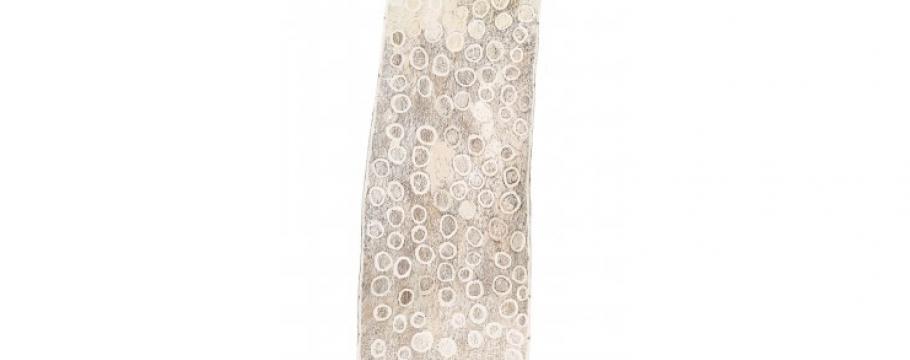
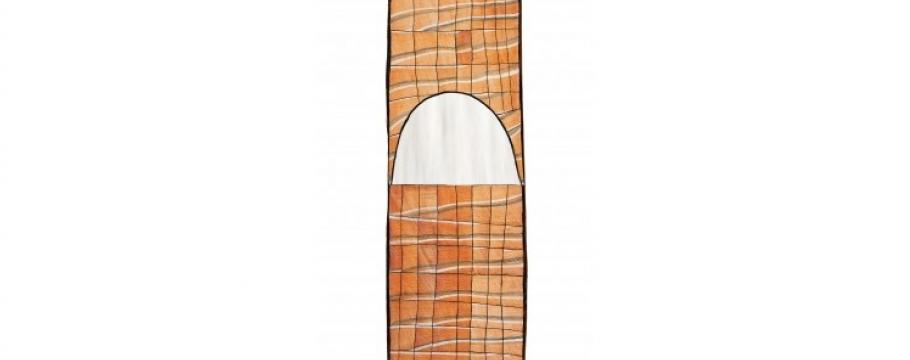

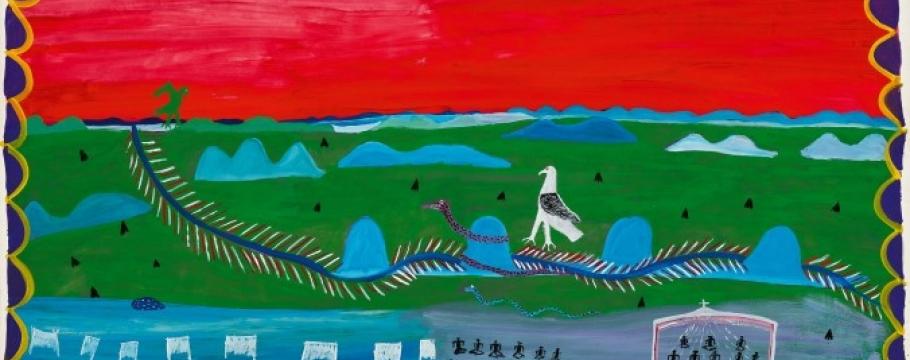

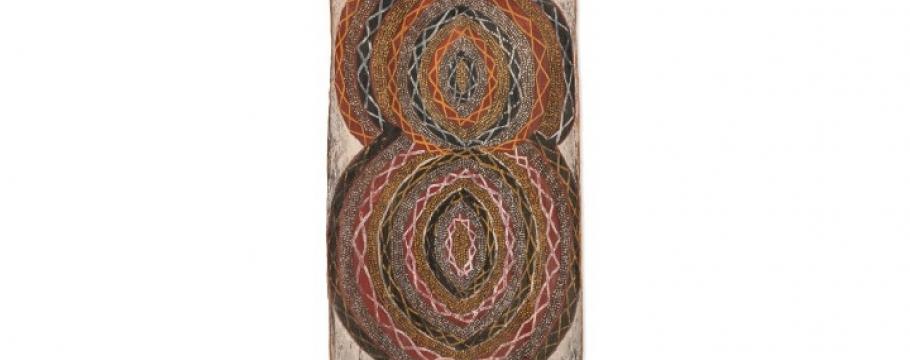

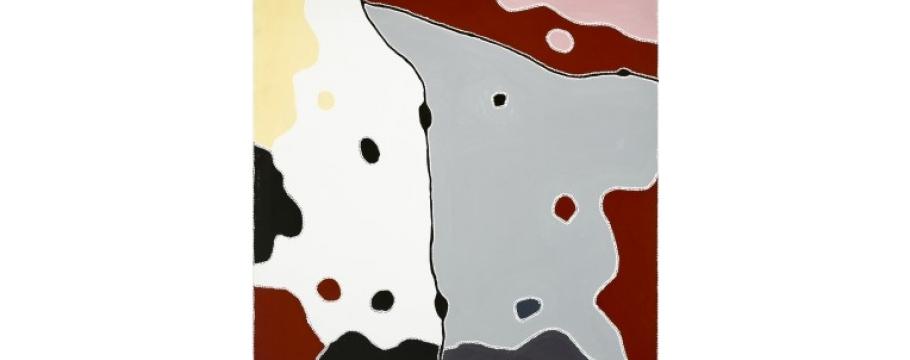
Deutscher and Hackett confident about latest Australian indigenous art auction
Author: Richard Brewster | Posted: 18th March, 2024
Ever the optimist, head of Aboriginal art at Deutscher and Hackett Crispin Gutteridge is confident the auction house’s forthcoming major sale of Important Australian Indigenous Art – from 7pm Tuesday March 26 in its Melbourne office at 105 Commercial Road, South Yarra – will at least be as successful as those of the previous two years.
“Both of those sold over the high-end estimate of $3 million,” he said. “This one’s top estimate is $2.5 million and we hope to achieve that again.”
Crispin has good reason to be upbeat about the auction. For starters, there are five Mirdidingkingathi Juwarnda Sally Gabori (c1924-2015) paintings on offer beginning with Lot 1, Dibirdibi Country, 2009.
Although she did not begin her art career until age 85, Gabori’s paintings – a tribute to the country on Bentinck island, a small, sparsely vegetated island in the Gulf of Carpentaria – are so revered that Melbourne’s Ian Potter Centre (part of the National Gallery of Victoria) in 2016-17 held a retrospective survey and celebration of her life and work.
Another reason is the early Emily Kame Kngwarreye (c1910-1996) Untitled (Edunga) 1990 (lot 7), carrying a catalogue estimate of $150,000-$250,000.
One of Australia’s best indigenous artists and another whose career only began in her latter years, Kngwarreye’s life and work are the subject of a stunning retrospective which opened in December last year at the National Gallery Australia in Canberra. The retrospective is scheduled to travel to London’s Tate Modern gallery in July next year.
Untitled (Edunga) is one of a small number of paintings similar in tonal colour that she painted in only her second year and have come to symbolise her oeuvre.
There are plenty of other works to interest buyers in a market that Crispin believes is strengthening both in Australia and overseas.
Nyapanyapa Yunupinu’s (c1945-2021) Circles 2011 (lot 3), a natural earth pigment painting on eucalyptus bark, is in this category.
Her work is regarded as unique and independent of Arnhem Land bark painting traditions while valued for the spontaneity and texture of her hand and mark making freeness.
Successful and innovative contemporary artist John Mawurndjul, whose career has spanned more than 30 years, is another strong contributor integral to overseas exhibitions and, in 2000, the 12th Biennale of Sydney followed by winning the 2002 and 2016 National Aboriginal & Torres Strait Islander Art Awards.
In his auction painting Buluwana at Dilebang 2011 (lot 9), his complexity and skill as a bark painter are on eminent display.
Tommy McRae (c1836-1901) was one of the first indigenous artists born when the colonisation of the Upper Murry River region was in its infancy. As such, he experienced the cultural transition from traditional Aboriginal life to one with a strong interaction with white settlers.
Because of his exposure, McRae was in the perfect position to record inciteful images of settler life and pre-colonial existence that included traditional hunting, fishing and ceremonial scenes.
His pen and ink on paper drawing entitled War Dance 1900 (lot 11) is typical of his traditional life recordings and was acquired by George Kilborn, youngest son of McRae’s friend and sometimes patron, Roderick.
Ginger Riley (c1936-2002) was another well-known indigenous artist who, because of his deep spiritual beliefs, had strong ties with the Anglican church.
In 1995, Riley was commissioned by the Anglican Diocese of the Northern Territory in Darwin to paint a work for the city’s Anglican Christ Church Cathedral to raise awareness of Aboriginal people in the parish.
His painting, entitled Christmas at Old Roper River Mission 1995-96 (lot 12), featuring his mother’s country at Limmen Bight, was a tribute to the church’s mission station on the Roper River in the Gulf of Carpentaria, established in 1908 and these days known as Ngukurr. Riley gifted the painting to the church after he had finished it.
Other artists of note are perennial favourite Albert Namatjira (1902-1959) with five watercolours including Ranges West Simpsons Gap (lot 28) and Deaf Tommy Mungatopi (1923-1985with the bark painting Coral c1965 (lot 37).
Paddy Bedford (c1922-2007) and Freddie Timms (1946-2017) are two more popular artists with respectively two paintings Untitled 2004 (lots 42 and 43) and Untitled 2008 (lot 44).




